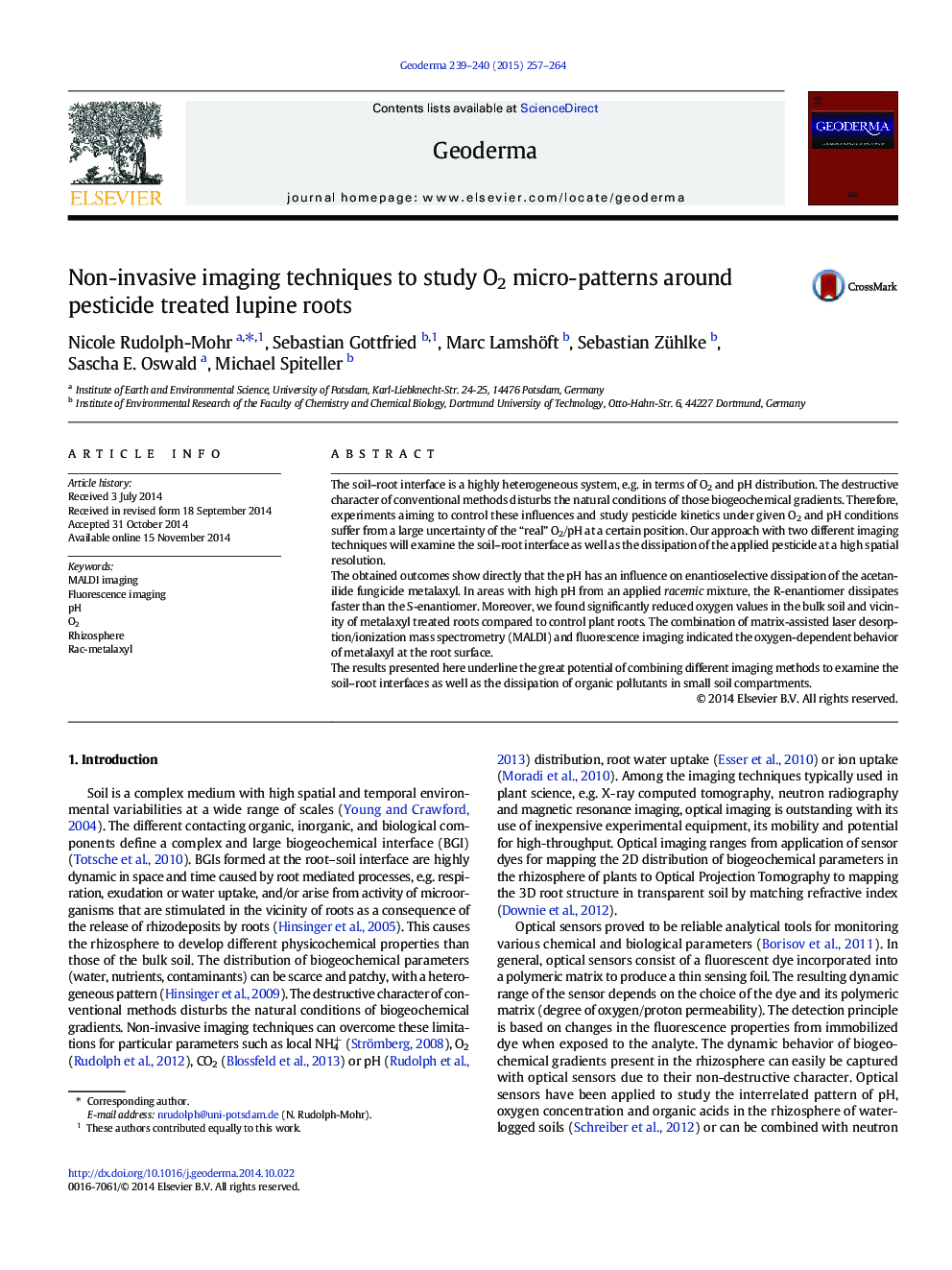| Article ID | Journal | Published Year | Pages | File Type |
|---|---|---|---|---|
| 6408676 | Geoderma | 2015 | 8 Pages |
â¢Non-invasive monitoring of oxygen concentration at the soil-root interfaceâ¢MALDI-IMS applied to the same plant to study metalaxyl patterns at the root surfaceâ¢Significantly reduced oxygen values in the bulk soil of metalaxyl treated rootsâ¢Our results indicated the oxygen-dependent behavior of metalaxyl at the root surface.â¢Direct evidence that pH influences the enantioselective dissipation of metalaxyl
The soil-root interface is a highly heterogeneous system, e.g. in terms of O2 and pH distribution. The destructive character of conventional methods disturbs the natural conditions of those biogeochemical gradients. Therefore, experiments aiming to control these influences and study pesticide kinetics under given O2 and pH conditions suffer from a large uncertainty of the “real” O2/pH at a certain position. Our approach with two different imaging techniques will examine the soil-root interface as well as the dissipation of the applied pesticide at a high spatial resolution.The obtained outcomes show directly that the pH has an influence on enantioselective dissipation of the acetanilide fungicide metalaxyl. In areas with high pH from an applied racemic mixture, the R-enantiomer dissipates faster than the S-enantiomer. Moreover, we found significantly reduced oxygen values in the bulk soil and vicinity of metalaxyl treated roots compared to control plant roots. The combination of matrix-assisted laser desorption/ionization mass spectrometry (MALDI) and fluorescence imaging indicated the oxygen-dependent behavior of metalaxyl at the root surface.The results presented here underline the great potential of combining different imaging methods to examine the soil-root interfaces as well as the dissipation of organic pollutants in small soil compartments.
